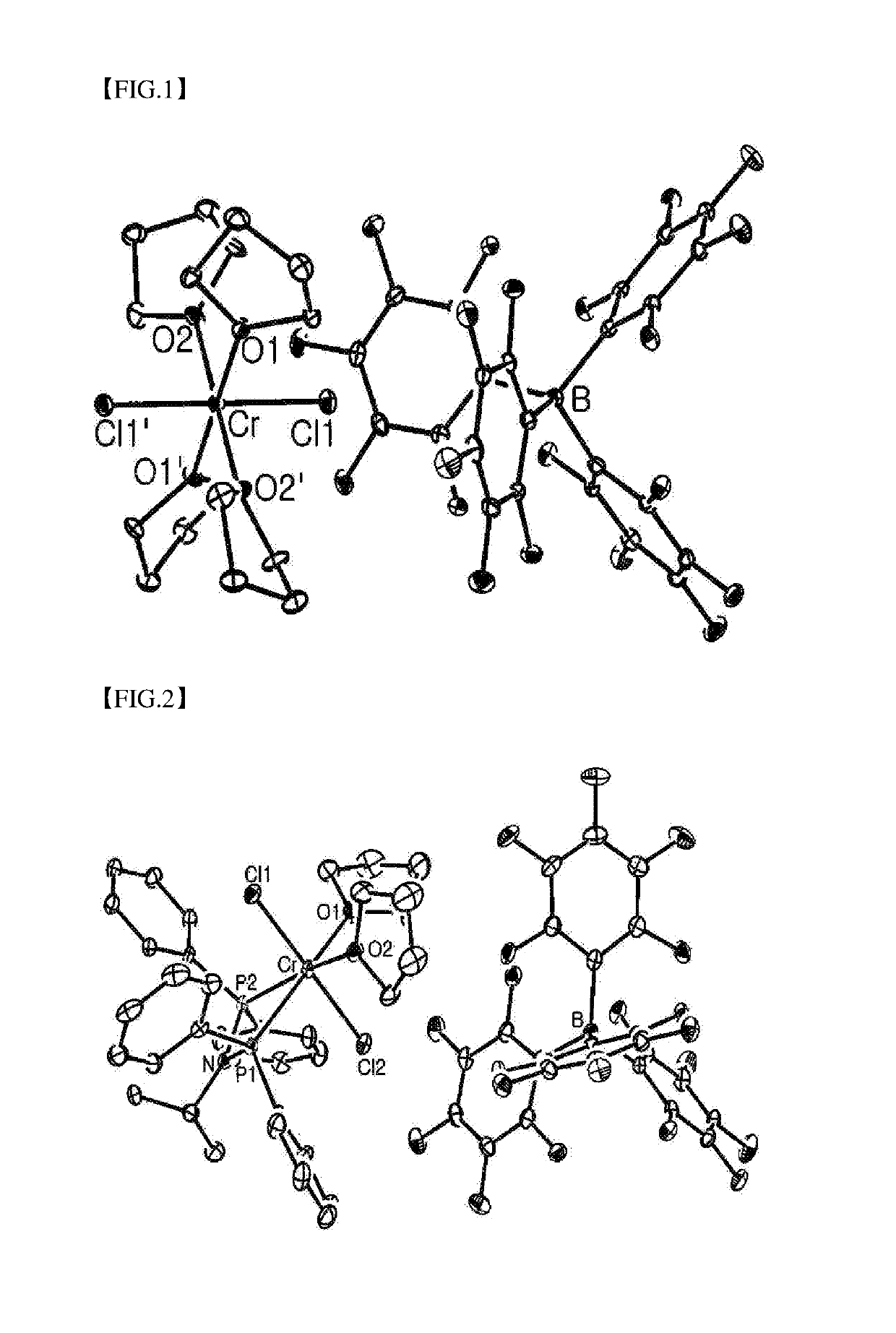Chrome compound, catalyst system using same, and method for preparing ethylene oligomer
- Summary
- Abstract
- Description
- Claims
- Application Information
AI Technical Summary
Benefits of technology
Problems solved by technology
Method used
Image
Examples
preparation example 1
ate Ligand (1)
[0084]5 mL of a dichloromethane solution in which 0.505 g (0.994 mmol) of pentatriacontane-18-amine was dissolved was slowly added at 0° C. to 5 mL of a dichloromethane solution in which 0.482 mg (2.19 mmol) of chlorodiphenylphosphine and 1.00 g (9.94 mmol) of triethylamine were dissolved. After stirring at 0° C. for 30 minutes, the temperature was slowly raised to room temperature. After 14 hours of reaction, the solvent was removed under reduced pressure and 10 mL of hexane was added to the resulting solution. An insoluble solid compound was removed by filtering. The solvent was removed in a vacuum under reduced pressure, the residue was dissolved in dichloromethane, and then acetonitrile was slowly diffused to allow recrystallization, thereby obtaining N-(diphenylphosphino)-N-(pentatriacontane-18-yl)-1,1-diphenyl phosphinoamine as a pure bidentate ligand compound (0.593 g, 68%). 1H NMR (C6D6, 400 MHz) 7.452-7.790 (8H, br, ArH), 7.080-7.163 (12H, m, ArH), 3.512-3.635...
preparation example 2
ate Ligand (2)
[0085]N-(diphenylphosphino)-N-isopropyl-1,1-diphenylphosphinoamine, a synthesis method of which has been reported in the document (J. AM. CHEM. SOC. 2004, 126, 14712-1471) and raw materials of which are readily available, was prepared.
example 1
on of Chromium Compound of Formula 1A
[0086]
[CrCl2(CH3CN)4]+[B(C6F5)4]− [Formula 1A]
[0087]An acetonitrile solution in which 2.540 g (2.67 mmol) of [Ag(CH3CN)4]+[B(C6F5)4]− was dissolved was slowly added at room temperature to 15 mL of an acetonitrile solution in which 1.00 g (2.67 mmol) of CrCl3(THF)3 was dissolved. After stirring at room temperature for 12 hours, a silver chloride (AgCl) product was removed by filtration. The solvent was removed from the filtrate in a vacuum under reduced pressure to obtain a solid-phase residue with a dark green color. The residue was dissolved again in 4 mL of acetonitrile and recrystallized at −30° C., thereby obtaining a dark-green crystalline compound represented by Formula 1A (1.533 g, 60). Anal. Calcd for C32H12BCrF20N4 (965.14 g mol−1): C, 39.8, H, 1.25, N, 5.81%. Found: C, 40.4, H, 1.97, N, 8.58%.
PUM
| Property | Measurement | Unit |
|---|---|---|
| Fraction | aaaaa | aaaaa |
| Fraction | aaaaa | aaaaa |
| Fraction | aaaaa | aaaaa |
Abstract
Description
Claims
Application Information
 Login to view more
Login to view more - R&D Engineer
- R&D Manager
- IP Professional
- Industry Leading Data Capabilities
- Powerful AI technology
- Patent DNA Extraction
Browse by: Latest US Patents, China's latest patents, Technical Efficacy Thesaurus, Application Domain, Technology Topic.
© 2024 PatSnap. All rights reserved.Legal|Privacy policy|Modern Slavery Act Transparency Statement|Sitemap

